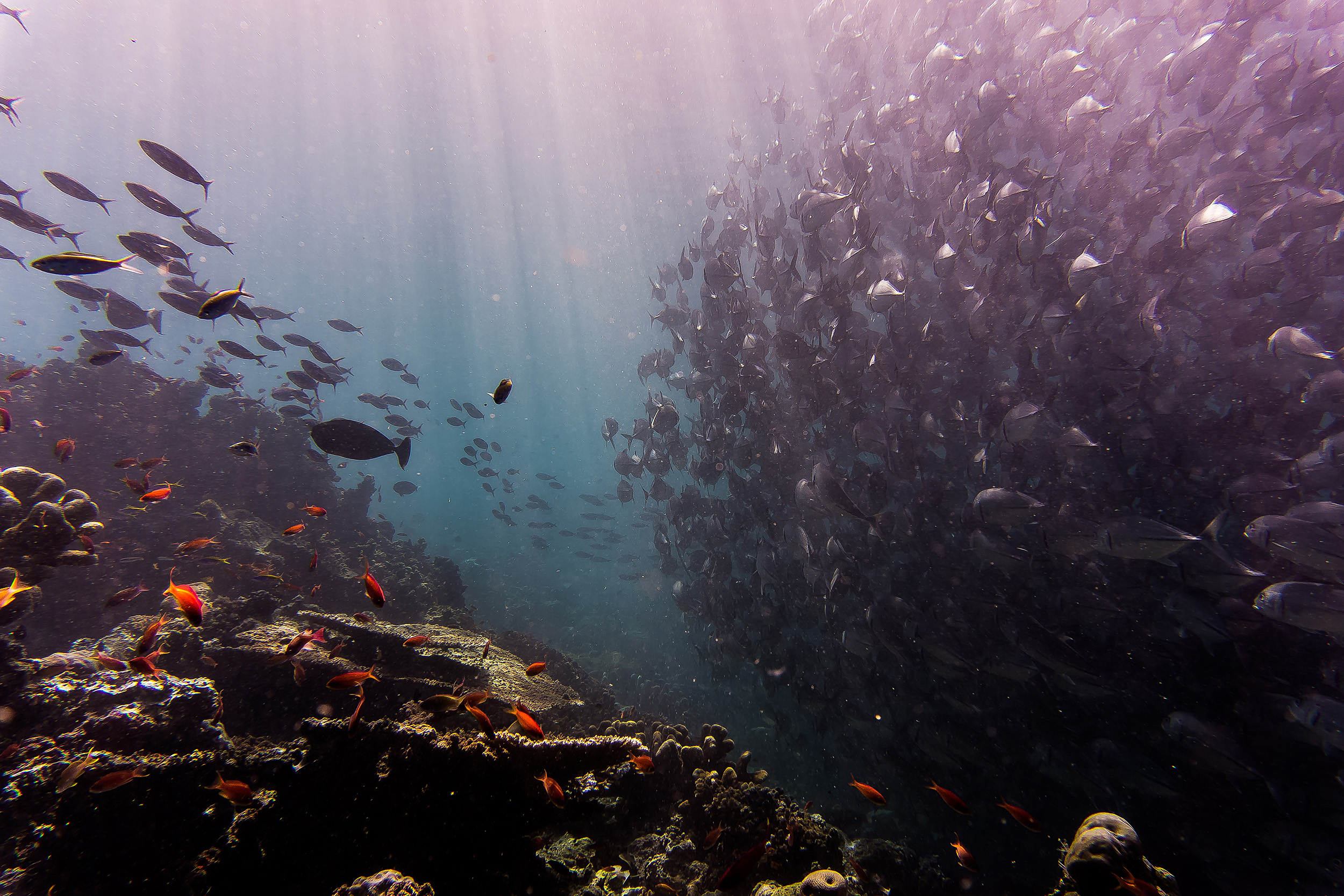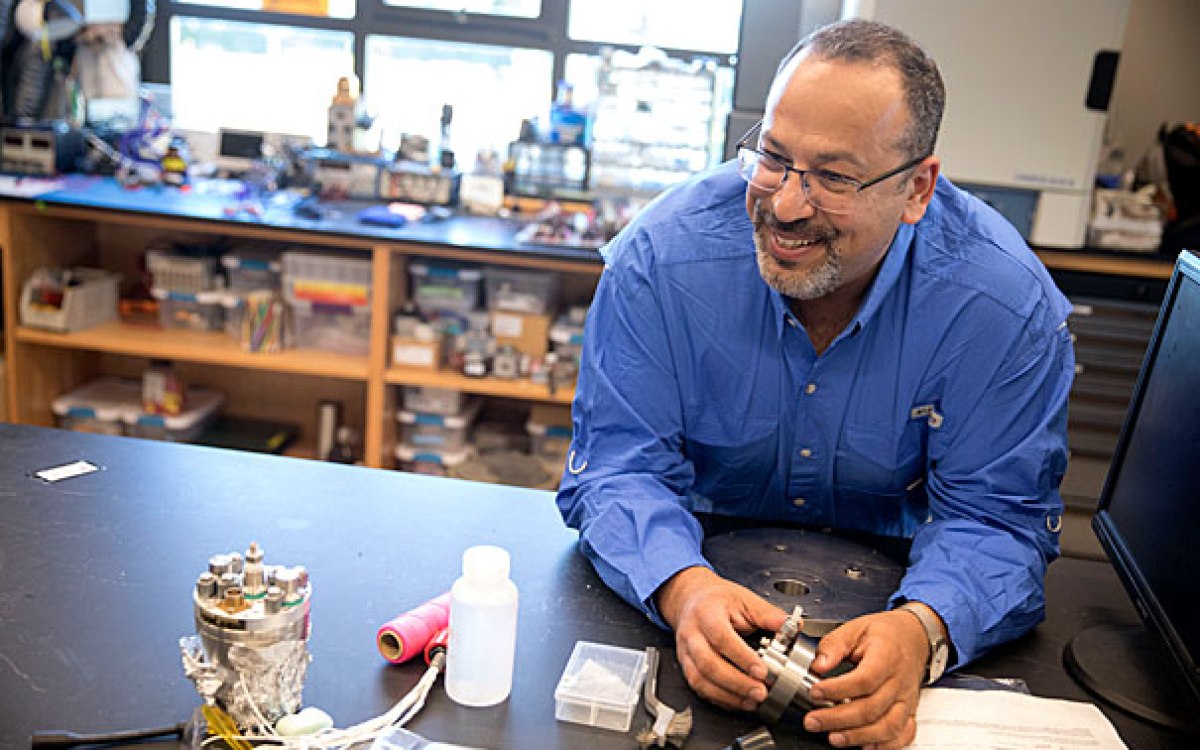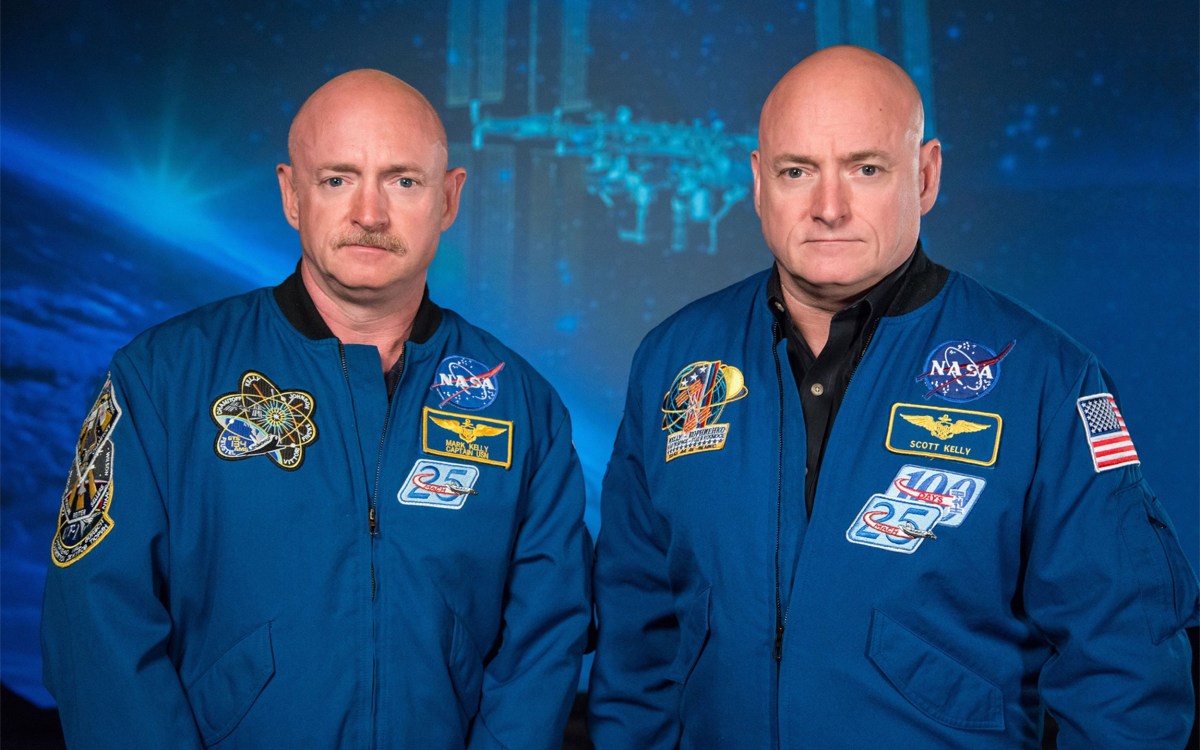
A new NASA program will look to Earth’s oceans to further understand ocean worlds in space.
Unsplash
Oceans away
New NASA-funded program to study water worlds, environments to understand limits of life as part of the search for life on other planets
A new NASA program will combine the study of sea and sky as part of the search for life in the outer solar system.
The $7.6 million Exploring Ocean Worlds research program will be headquartered at the Woods Hole Oceanographic Institution (WHOI). The project will pull together some of the nation’s leading experts in ocean and space research, and create a Network for Ocean Worlds to advance research nationwide by helping teams of investigators share information.
Scientists have come to view ice-covered astronomical bodies with ocean-like features, so-called ocean worlds, as the best bets for finding life elsewhere. But deep-sea microbiologist Peter R. Girguis says this begs a fundamental question: What is life? It could be that life developed differently on other planets than it did on Earth, so understanding as much as possible about various life forms here may offer insight into what we find elsewhere.
“My role in this project is taking a hard look at how microorganisms make a living in some of the most extreme environments on Earth,” said Girguis, a Professor of Organismic and Evolutionary Biology and one of five founding investigators on Exploring Ocean Worlds. The others include: Christopher German, lead investigator and WHOI senior scientist, Tori Hoehler of NASA’s Ames Research Center, Donna Blackman of the University of California, San Diego’s Scripps Institution of Oceanography, and Kevin Peter Hand of the California Institute of Technology’s Jet Propulsion Lab.
“We are going to be visiting some of Earth’s most extreme environments to really understand the limits of life: deep-ocean underwater volcanoes, where microbes live that are Earth’s most heat-tolerant organisms; deserts; and also the polar regions. Coldest, hottest, driest. Those are Earth’s best facsimiles for some of these potential environments beyond Earth,” he said.
The initiative’s trajectory is twofold. “Let’s look for places that look very similar to Earth,” said Girguis. “And let’s look for life that may be nothing like what we have on Earth.”
Scientists have centered the search for life in outer space on the search for water. As WHOI’s German said when announcing the project, “If we hope to find evidence of life beyond Earth within the next human generation, then our best bet is to look toward the growing list of ice-covered ocean worlds right here in our own solar system.”
Indeed, Exploring Ocean Worlds aims to accelerate research on planetary bodies with liquid water oceans that may harbor life or conditions that could support it by coordinating studies nationwide that advance our understanding of ocean worlds. Beyond the search for water, said Girguis, it may be useful to look for life in any environment that has sources of energy and where conditions aren’t too extreme. This rules out, for example, places that are too hostile to support life, such as Jupiter, which is thought to be very radioactive. “Radiation is good at shredding complicated cells,” he explained.
Girguis notes that the building blocks of life — such as carbon, nitrogen, hydrogen, and sulfur — are found throughout the solar system. Even on Earth, these elements were sustaining life long before oxygen came to dominate our atmosphere. And many of these life forms, he added, are still with us.
“The so-called anaerobic microbes on Earth are able to harvest energy from chemicals to make a living in ways that we can’t do,” he said. “These microbes live off volcanic gases. Volcanoes make hydrogen and also carbon dioxide, and some microbes can take these and make methane. The vast majority live in the mud in the deep ocean where there is no oxygen or they live in underwater or land volcanoes.
“Those microbes are in many ways our inspiration for ways of thinking about how organisms might live on other planets,” he continued. “We are trying very hard to be open-minded about where life might persist and where life might have evolved that is unlike Earth life. By bringing together our various perspectives and really pushing ourselves to think broadly and deeply, we are trying to tackle one of science’s grand questions.”
The implications, he pointed out, could not be more vital to our own continued existence. “This is our Earth and to understand our Earth, we have to understand the fundamentals,” he said. “This project allows us to think about what it is we need to keep a planet habitable.”







